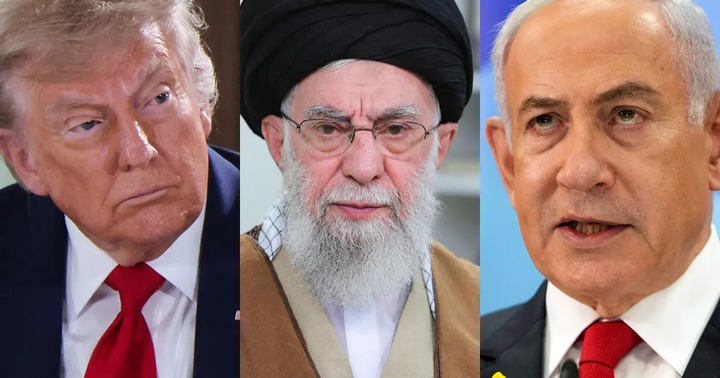The Middle East is once again on edge as signs point to a possible second round of military confrontation between the United States and Iran. From intelligence leaks to military mobilisation, the groundwork for escalation appears to be actively unfolding.If You’re Reading From Phoenix Click On Read Original at the top To Read Full Article
According to Mossad Commentary, a verified Israeli intelligence-linked account, “in the last 24 hours, dozens of American fighter jets and refuelling tankers have been shifted eastward, many landing at Al-Udeid Airbase,” the largest US military installation in the region, located in Qatar.
The movement, posted Wednesday, is far from routine. It suggests a strategic pivot, possibly in anticipation of Iranian retaliation or a pre-emptive strike.
Also, flight tracking systems reported on September 28, about 12 tankers headed to the British RAF Mildenhall airbase, and on September 30, dozens of refuelling tankers, along with fighter jets, flew to the Middle East. As the Clash Report notes, some of them landed at the Al Udeid base in Qatar.
Three anonymous sources in the British Defence Ministry told the Daily Mail that such a deployment could have “sinister” overtones. And Behnam Taleblu, senior director of the Iran program at the Foundation for Defence of Democracies, reminded the publication that the last time similar moves ended in attacks in the Middle East.
He emphasised that during Operation Midnight Hammer, the Donald Trump administration used disinformation to cover up the deployment of B-2 bombers to Iranian facilities. Taleblu also pointed out that Trump remains the only US president in the past two decades to use military force against Iranian nuclear facilities.
The US Central Command (USCENTCOM), which oversees operations across the Middle East, has long considered Iran its primary adversary. In 2025, USCENTCOM received $143.2 billion, with nearly 40% allocated to Iran-related operations. This includes intelligence gathering, forward base maintenance, and war-gaming scenarios ranging from limited strikes to full-scale regime change.
USCENTCOM’s Iran desk, staffed by Farsi-speaking analysts, has spent years studying Tehran’s military doctrine. These specialists shaped contingency plans that are now being activated. The command’s origins trace back to the 1979 hostage crisis, giving it unmatched institutional knowledge of Iranian warfare.
Behind the military muscle lies a vast intelligence architecture. The CIA maintains assets within Iran’s government, military, and business elite—some dating back to the Shah’s era. These relationships proved pivotal in 2025, when secret negotiations began between Washington and Tehran. US intelligence had advanced knowledge of Iran’s positions, thanks to intercepted communications revealing internal debates among the Iranian leadership.
This intelligence enabled the precision strikes of Operation Midnight Hammer, which followed the collapse of talks. Years of surveillance had mapped Iran’s air defence systems, and electronic warfare tools blinded radars before American bombers arrived.
Diplomacy, alliances, and Qatar shield
It could be that while the Pentagon prepared for escalation in June, the Trump administration pursued a high-stakes diplomatic strategy. Talks began on April 12, 2025, in Muscat, Oman, and later moved to Rome, led by Special Envoy Steve Witkoff and Iranian Foreign Minister Abbas Araghchi. Iran was given a 60-day deadline: halt uranium enrichment and cooperate with inspectors, or face military consequences.
According to Middle East Eye, the talks nearly succeeded. But after a phone call between President Trump and Israeli Prime Minister Netanyahu, the US raised its demands—insisting on a complete shutdown of Iran’s nuclear enrichment program, a red line for Tehran. The talks collapsed, triggering Israel’s Operation Rising Lion, followed by US strikes under Operation Midnight Hammer.
The administration framed the escalation as “Peace Through Strength”, blaming Iran for refusing a deal. Secretary of State Marco Rubio warned that any Iranian retaliation would “put the regime at risk,” making regime survival a bargaining chip.
Israel’s influence was unmistakable. Its intelligence and military operations systematically weakened Iran’s defences in the lead-up to US strikes. The Group of Seven (G7) reaffirmed that “Iran can never have a nuclear weapon,” while France and Germany privately urged restraint, even as bombs fell.
Amid rising tensions, on Tuesday, President Trump signed an executive order declaring that any attack on Qatar would be treated as a direct threat to the United States. This move is significant not only because of the strategic importance of Al-Udeid Airbase, but also because it sends a clear message to Iran and its proxies: Qatar is off-limits.
This assurance came shortly after Netanyahu reportedly made an apology call to the Emir of Qatar, following Israeli airstrikes that inadvertently endangered Qatari interests. The call, described by insiders as “tense but conciliatory,” underscores the delicate balance of alliances in the Gulf.
Meanwhile, the United Nations Security Council has reimposed sweeping sanctions on Iran. On September 27, 2025, the Council rejected a resolution by Russia and China to delay the sanctions, triggering the snapback mechanism under the 2015 nuclear deal. The reinstated sanctions include: a comprehensive arms embargo, a ban on uranium enrichment, a global freeze on assets linked to Iran’s nuclear and ballistic programs, travel bans on key Iranian officials and restrictions on Iranian crude oil exports and financial institutions.
Western powers accused Iran of serious breaches, notably enriching uranium far beyond civilian levels. Iran responded by recalling ambassadors from the E3 nations and threatening to terminate cooperation with the IAEA.
The US strategy also hinges on managing a complex web of alliances. Israel offers unmatched intelligence and cyber capabilities, while Gulf Arab states provide bases and financial support, but tread carefully to avoid becoming direct targets. During the crisis, Saudi Arabia and the UAE allowed US access to airspace while publicly calling for restraint.
To mitigate risks, the US relied on its Forward Shield, a network of bases and infrastructure built over decades. During crisis periods, the US maintains 40,000 troops in the region. But the real strength lies in pre-positioned equipment, fuel depots, and ammunition bunkers that enable rapid reinforcement.




